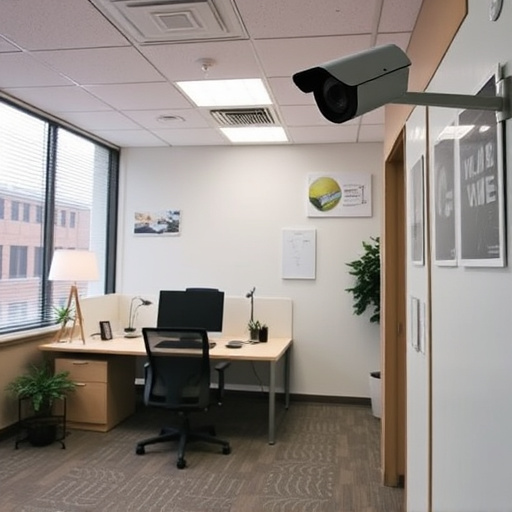Office hidden cameras are becoming a common security tool, offering businesses protection and performance insights while raising privacy concerns. Their deployment requires careful consideration of legal obligations, data handling, and camera placement to respect employee rights and maintain trust. Diverse types of hidden cameras provide discreet surveillance, with wireless options offering flexibility. When implemented properly, these cameras enhance security, deter theft, and enable productivity monitoring, but they must be balanced against privacy rights and ethical implications. Best practices include transparent policies, minimal intrusion, regular audits, strict access controls, and clear protocols for data handling and breaches.
Uncover the ins and outs of office hidden cameras in this comprehensive guide. From understanding their capabilities to navigating legal and ethical complexities, we explore every angle of workplace surveillance. Discover different types of hidden cameras designed for office environments and learn about their diverse applications. We also delve into the benefits they offer while highlighting critical privacy concerns and best practices to ensure responsible implementation.
Understanding Office Hidden Cameras: A Comprehensive Overview
Office hidden cameras, also known as surveillance cameras, are increasingly becoming a standard feature in modern workplaces. These devices offer businesses an efficient way to monitor activities within their premises, enhancing security and peace of mind. However, understanding the nuances of office hidden cameras is essential for employers to ensure they comply with privacy laws and foster a transparent work environment.
Hidden cameras can be discreetly installed in various locations, from break rooms to offices and common areas. They capture video footage that can later be reviewed for security purposes, employee performance evaluation, or even crime investigation. While this technology provides valuable insights, it raises concerns about employee privacy. Therefore, employers should establish clear policies regarding camera placement, data storage, and access to ensure ethical and legal use of office hidden cameras.
Legal Considerations and Privacy Concerns with Hidden Cameras in the Workplace
The deployment of office hidden cameras raises significant legal considerations and privacy concerns. In many jurisdictions, the use of surveillance technology is governed by strict regulations to protect employees’ rights. Installation of hidden cameras in the workplace must comply with data protection laws, which often require explicit consent from individuals being monitored. Even with proper consent, there are restrictions on where cameras can be placed to ensure a reasonable expectation of privacy. For example, cameras should not be positioned in areas where employees have a legitimate expectation of privacy, such as private lockers or bathrooms.
Privacy advocates argue that hidden cameras infringe upon individual liberty and can create a hostile work environment. Employees may feel constantly monitored, leading to increased stress and decreased trust in their employers. Additionally, footage captured by these cameras could potentially be misused or accessed by unauthorized parties, further exacerbating privacy issues. Therefore, organizations considering the implementation of office hidden cameras must carefully balance security needs with the legal and ethical implications to maintain a fair and respectful workplace.
Types of Hidden Cameras: Options for Office Surveillance
Office hidden cameras come in various types, each offering unique features and applications for surveillance. One common option is the mini camera, tiny yet powerful, capable of capturing high-resolution footage and often equipped with night vision capabilities. These discreet devices can be easily installed in corners or behind furniture, providing comprehensive coverage without disrupting office aesthetics.
Another type is the wireless hidden camera, offering flexibility and convenience. These cameras transmit video signals wirelessly to a receiver or recording device, making them ideal for remote monitoring. They are often easy to set up and hide, allowing businesses to keep an eye on sensitive areas without drawing attention. With advanced options like motion detection and cloud storage, these cameras enhance office security while maintaining privacy.
Benefits and Use Cases for Implementing Office Hidden Cameras
Office hidden cameras have become increasingly popular tools for businesses aiming to enhance security and surveillance. One of the primary benefits is the ability to deter potential theft, vandalism, or inappropriate behavior. By strategically placing these cameras in discreet locations, employers can create a sense of awareness among employees, reducing chances of unauthorized activities. This is especially useful in high-value item storage areas or places where sensitive information is handled.
Additionally, hidden cameras offer valuable insights into employee performance and productivity. They can be used to monitor work spaces, break rooms, and common areas to ensure fair practices and identify areas for improvement. For example, footage can help managers assess workload distribution, detect time-wasting activities, or even track customer interactions in retail settings. This data-driven approach allows businesses to make informed decisions, improve overall efficiency, and create a safer working environment.
Ethical Implications and Best Practices for Office Surveillance
In implementing office hidden cameras, it’s crucial to balance security needs with ethical considerations. While surveillance can enhance workplace safety and prevent theft or harassment, the practice raises privacy concerns among employees. This delicate equilibrium requires clear communication and transparency from management about the purpose, scope, and limitations of surveillance. Employees should be made aware of camera locations and have access to information on how their data will be used, stored, and protected.
Best practices for office surveillance involve adhering to legal guidelines and industry standards. Cameras should only be positioned in areas relevant to security purposes, with minimal intrusion into private spaces or areas where employees reasonably expect privacy. Regular audits of camera placements and data retention policies ensure compliance and maintain employee trust. Additionally, strict access controls on video footage and clear protocols for handling breaches or discrepancies foster a culture of accountability and respect for individual rights within the workplace.
